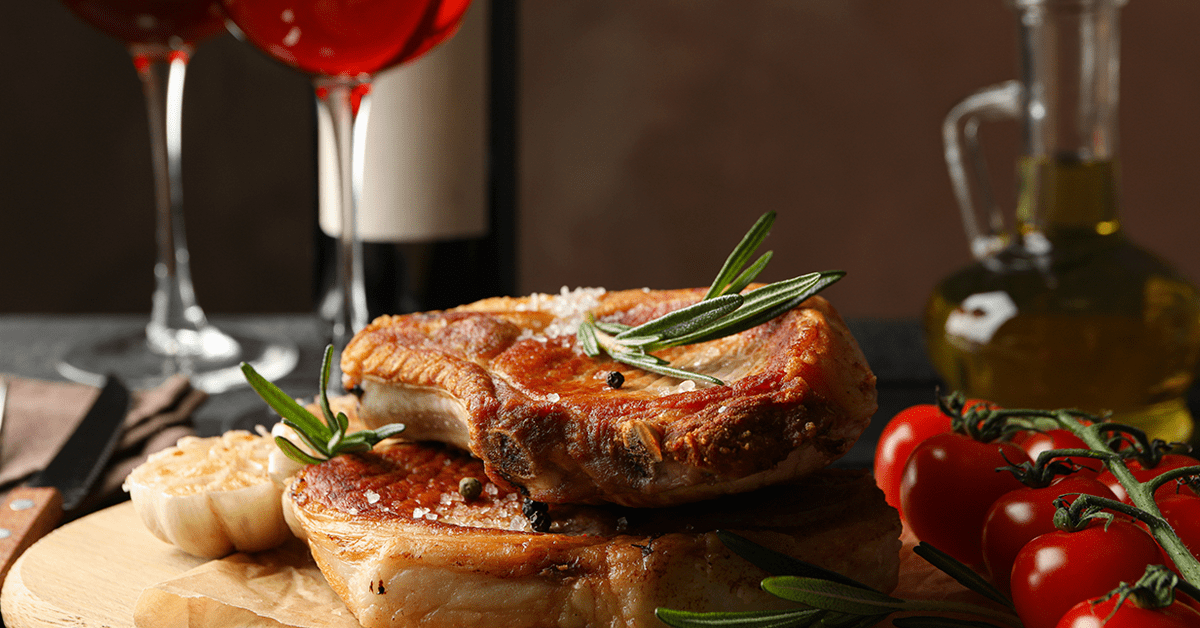
Embarking on the world of wine can be an exciting journey, and one grape variety that stands out for its bold flavours and distinctive character is Malbec. Originating from the Cahors region in France, Malbec has found a new home in Argentina, where it has flourished and gained global recognition. If you’re a new customer eager to explore the world of wine, here’s everything you need to know about Malbec wine.

A Brief History
The roots of Malbec trace back to the picturesque vineyards of Cahors, a region nestled in the southwestern part of France. The grape’s history is intertwined with the centuries-old winemaking traditions of Bordeaux, where it once played a prominent role in the blends of red wines. However, the tale of Malbec took a turn as it faced challenges, including susceptibility to diseases like phylloxera and coulure, which led to a decline in its cultivation in France.
In the 19th century, the grape found a new haven in the fertile soils of Argentina. It was here, against the breathtaking backdrop of the Andes Mountains, that Malbec experienced a renaissance. The high-altitude vineyards of Mendoza, in particular, proved to be the perfect environment for Malbec to thrive. The ample sunshine, cool nights, and well-drained soils imparted unique characteristics to the grape, giving birth to a distinct style of wine that would captivate palates worldwide.
The adoption of Malbec by Argentine winemakers marked a turning point, transforming it into the country’s signature grape. The success of Malbec in Argentina not only revived the grape but also elevated it to international acclaim. Today, when enthusiasts savour a glass of Argentinian Malbec, they are experiencing the culmination of a historical journey that spans continents and centuries.
The revival of Malbec serves as a testament to the resilience of grape varieties and the dynamic nature of the global wine industry. As you uncork a bottle of Malbec, you’re not just tasting a wine; you’re sipping on a rich history that has transcended borders and stood the test of time.
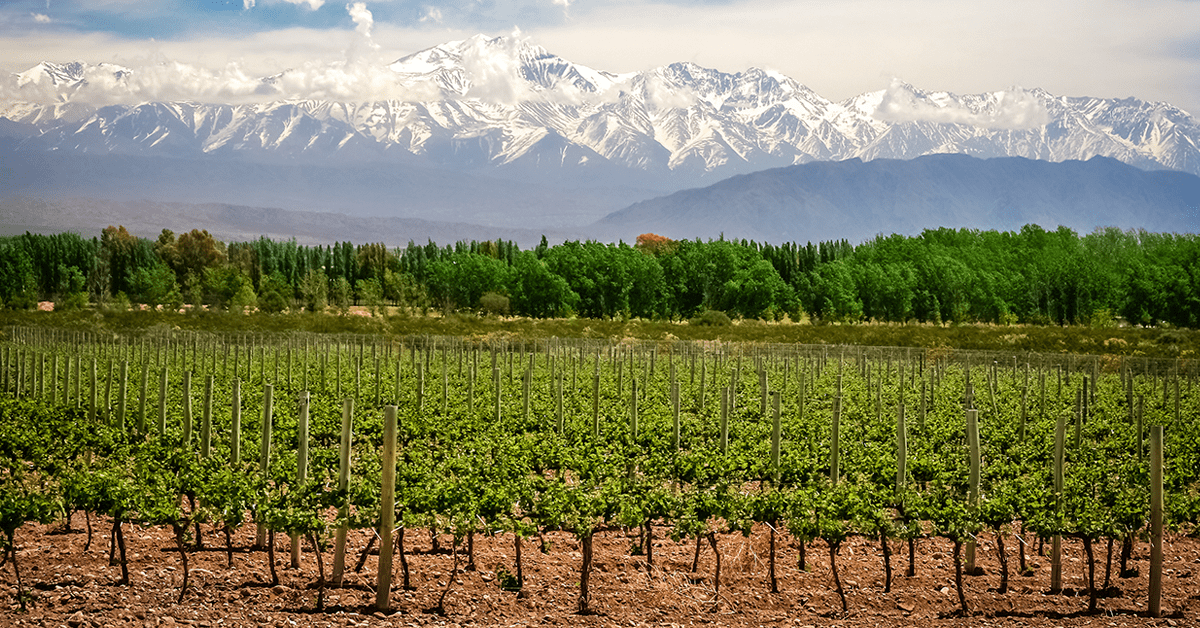
Argentinian Malbec
Argentina’s embrace of Malbec has transformed this grape variety into a symbol of the nation’s winemaking prowess. The vast and diverse landscapes of Argentina, particularly the high-altitude vineyards of the Mendoza region, have provided the ideal terroir for Malbec to flourish and express its full potential. Here, in the shadow of the majestic Andes Mountains, Malbec vines bask in the intense sunlight, while the significant diurnal temperature variation between day and night ensures slow ripening and optimal flavour development.
One of the defining characteristics of Argentinian Malbec is its deep, inky colour, which sets the stage for the wine’s bold and captivating profile. The sun-drenched days contribute to the accumulation of sugars, resulting in wines with generous alcohol content, while the cool nights help to preserve the grape’s natural acidity, creating a harmonious balance.
The Mendoza region, encompassing sub-regions like Luján de Cuyo and the Uco Valley, has become the epicentre of Malbec production. The diverse elevations and soil types within these areas add layers of complexity to the wines. From the stony soils of the Uco Valley to the clay-limestone compositions in Luján de Cuyo, each sub-region imparts its unique imprint on the final product.
Argentinian Malbec is renowned for its robust flavours, often showcasing notes of ripe blackberries, plums, and cherries. The wines are characterised by a velvety texture that glides smoothly across the palate, leaving a lingering impression. The moderate acidity ensures a well-balanced profile, making it an approachable and crowd-pleasing choice for both seasoned wine enthusiasts and those new to the world of red wines.
In essence, Argentinian Malbec is a celebration of the marriage between a grape and its terroir. It’s a journey through the sun-soaked landscapes of Mendoza, encapsulating the spirit and passion of a nation that has truly made this variety its own. As you savour a glass of Argentinian Malbec, you’re not just tasting wine; you’re experiencing the essence of Argentina in every sip.

Tasting Notes
Malbec, with its deep and alluring personality, invites wine enthusiasts into a sensory experience that is both distinctive and memorable. The journey begins with the visual allure of the wine—a deep, opaque purple hue that hints at the concentration of flavours within the glass. This rich colour sets the stage for what is to come, preparing the drinker for an exploration of the nuanced aromas and flavours that characterise Malbec wines.
On the nose, Malbec often unveils a bouquet that is as captivating as it is diverse. Ripe blackberries, succulent plums, and luscious cherries take centre stage, creating a fruit-forward and inviting aroma. These primary fruit notes are often accompanied by subtle undertones of violets, providing a delicate floral layer that enhances the overall aromatic complexity.
As the wine graces the palate, the true essence of Malbec reveals itself. The initial taste is marked by the explosion of dark fruit flavours, delivering a symphony of blackberries, black cherries, and sometimes even a hint of blueberries. The fruitiness is complemented by a moderate level of acidity, which imparts a refreshing quality to the wine and balances its inherent richness.
Malbec’s charm extends to its texture—a velvety and smooth mouthfeel that adds to the overall enjoyment. The tannins, though present, are typically soft and approachable, contributing to the wine’s lush and rounded character. This makes Malbec an excellent choice for those who appreciate red wines with a certain opulence yet without overwhelming astringency.
The finish of a Malbec is often lingering, leaving a pleasant aftertaste that echoes the initial burst of fruit on the palate. Some expressions may also showcase subtle hints of cocoa, tobacco, or a touch of spiciness, adding further layers to the overall tasting experience.
In essence, Malbec’s tasting notes embody a harmonious interplay of fruit, structure, and texture—a symphony that captures the essence of the grape and the terroir from which it hails. Whether enjoyed on its own or paired with a variety of dishes, Malbec’s distinctive profile ensures a delightful and memorable journey for every wine enthusiast.
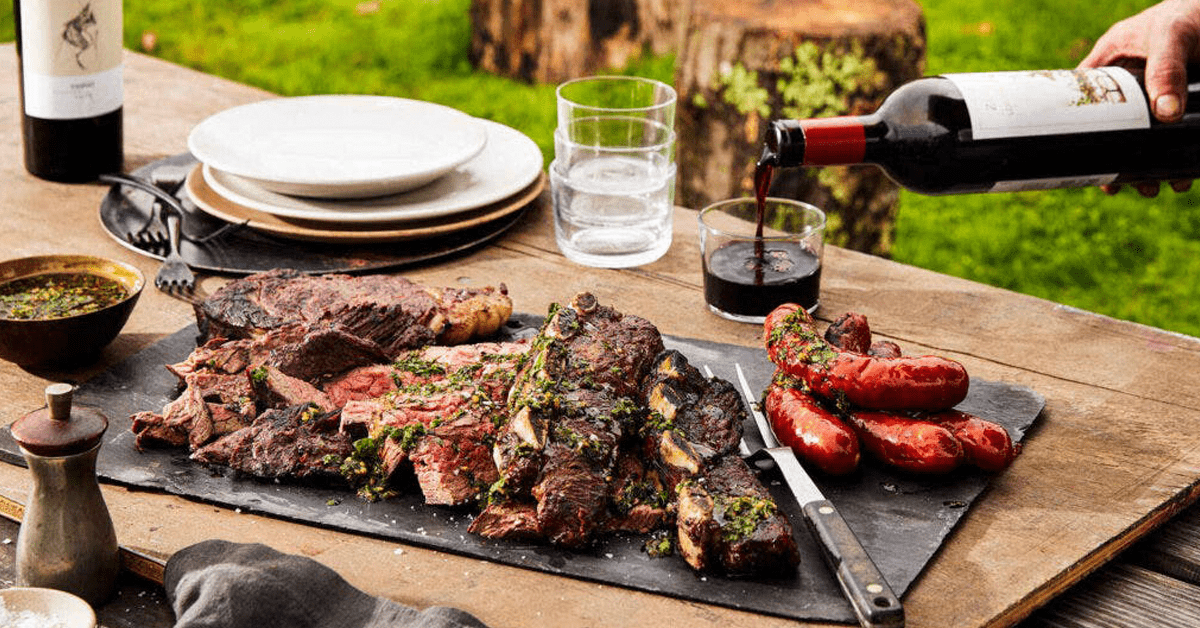
Food Pairing
One of the remarkable aspects of Malbec is its remarkable versatility when it comes to food pairing. This red wine’s bold and fruit-driven character harmonises with a wide array of dishes, making it an excellent choice for both casual meals and special occasions. The key lies in Malbec’s ability to complement and enhance the flavours of various foods, creating a dining experience that is both satisfying and memorable.
a) Grilled Meats
Malbec’s robust structure and dark fruit flavours make it an exceptional companion to grilled meats, particularly beef. Whether it’s a succulent steak, juicy burgers, or smoky barbecued ribs, the wine’s tannins and acidity cut through the richness of the meat, providing a delightful contrast and elevating the overall dining experience. The marriage of Malbec and grilled meats is a classic combination that showcases the wine’s ability to stand up to bold flavours.
b) Argentine Asado
In its Argentine homeland, Malbec finds a natural pairing with the traditional asado, a barbecue feast featuring an assortment of meats. The wine’s ability to complement the charred and savoury notes of grilled meats, along with its affinity for the South American culinary culture, makes it an integral part of the Argentine dining experience.
c) Lamb
The medium to full-bodied nature of Malbec makes it an ideal match for lamb dishes. Whether roasted, grilled, or in hearty stews, the wine’s tannins and fruitiness complement the robust flavours of lamb, creating a harmonious union that delights the palate.
d) Empanadas and Spicy Dishes
Malbec’s fruit-forward profile and moderate acidity make it a great partner for dishes with a bit of spice. Think of pairing it with empanadas, a beloved South American pastry filled with savoury ingredients. The wine’s ripe fruit flavours provide a pleasant contrast to the heat, offering a balanced and enjoyable dining experience.
e) Hard Cheeses
Malbec’s structured tannins and dark fruit notes also make it a wonderful match for a variety of hard cheeses. Consider pairing it with aged cheddar, Manchego, or Gouda to experience how the wine’s richness complements the savoury and nutty characteristics of the cheese.
In essence, the versatility of Malbec extends beyond its grape varietal—it effortlessly adapts to a diverse range of cuisines, making it a delightful choice for anyone seeking a red wine that can enhance the pleasure of a wide array of dishes. Whether you’re indulging in a casual barbecue or savouring a gourmet meal, Malbec’s ability to elevate the dining experience is truly something to be celebrated.
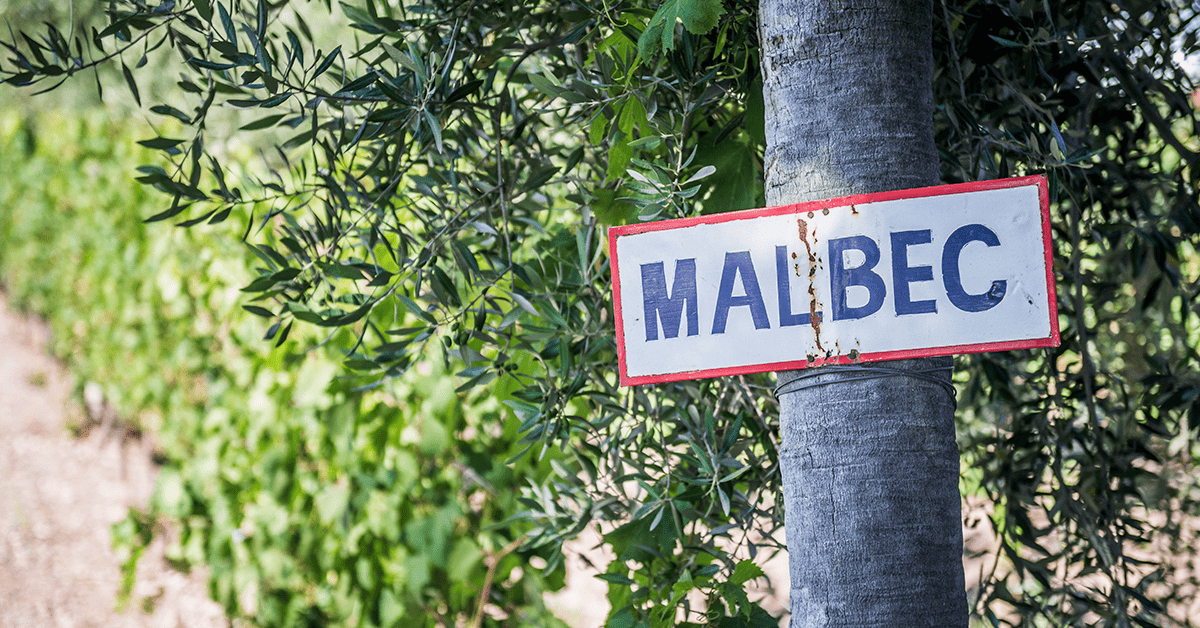
Regions of Origin
Malbec, with its roots deeply embedded in French soil, has evolved into a variety that showcases its adaptability to diverse terroirs across the globe. While Argentina has emerged as the modern-day powerhouse for Malbec production, it’s crucial to recognize the grape’s historical significance in its birthplace, Cahors, France.
a) Cahors, France
Cahors, a charming region situated along the Lot River in southwestern France, is the original home of Malbec. Here, the grape is known locally as “Cot” and is a key component in the wines of the Cahors appellation.
The terroir of Cahors, characterised by its limestone-rich soils, imparts a distinct mineral quality to the wines. Cahors Malbecs tend to be more tannic and structured compared to their Argentinian counterparts, showcasing a different expression of the grape.
b) Mendoza, Argentina
Argentina, particularly the Mendoza region, has become synonymous with exceptional Malbec wines. The high-altitude vineyards, ranging from 2,000 to 3,000 feet above sea level, contribute to the grape’s vibrant acidity and intense color. The sunny days and cool nights in the Andean foothills result in wines that are ripe, full-bodied, and fruit-forward. Luján de Cuyo and the Uco Valley, sub-regions within Mendoza, are celebrated for producing some of the finest Argentinian Malbecs, each reflecting the nuances of their specific terroirs.
Exploring Malbec from both regions provides a fascinating journey into the influence of climate, soil, and winemaking traditions. While French Malbecs often exhibit a more Old-World austerity with pronounced tannins, Argentine Malbecs showcase a New-World exuberance, emphasising fruit-forwardness and approachability. This diversity allows wine enthusiasts to appreciate the versatility of Malbec and the unique qualities that different regions impart to the same grape variety.
c) Global Presence
Beyond France and Argentina, Malbec has also found a home in other parts of the world. Countries like Chile, the United States, Australia, and South Africa have embraced the grape, experimenting with different winemaking styles and showcasing the adaptability of Malbec to various climates and soils.
In essence, the exploration of Malbec unveils a narrative that spans continents, linking the Old World traditions of France with the dynamic viticultural landscape of Argentina and beyond. Whether you’re sipping a robust Cahors Malbec or indulging in the fruit-forward allure of an Argentinian expression, each glass tells a story of the grape’s journey and its ability to captivate wine enthusiasts across borders.
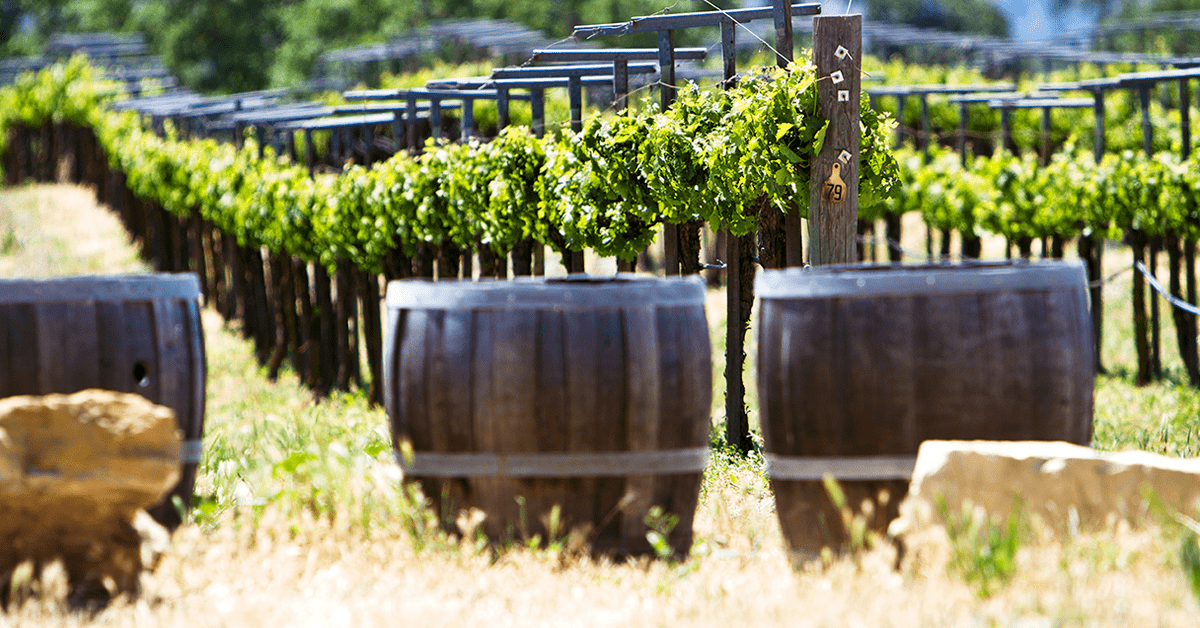
Ageing Potential
Malbec, often celebrated for its immediate drinkability and vibrant fruit flavours, also possesses a fascinating ageing potential that adds a layer of complexity to the overall Malbec experience. While many Malbecs are crafted to be enjoyed in their youth, some high-quality expressions demonstrate the grape’s capacity to evolve and improve with time, offering a different set of characteristics that captivate the senses.
a) Youthful Enjoyment
The majority of Malbec wines are crafted with the intention of being consumed relatively young. In their youth, these wines exhibit the full spectrum of the grape’s primary characteristics—rich, ripe fruit flavours, a velvety texture, and a vibrant, approachable profile. These youthful Malbecs are perfect for those seeking wines that are lively, fruit-forward, and ready to be enjoyed without the need for extended ageing.
b) Oak Aging
For those seeking a more nuanced and complex experience, certain Malbecs undergo ageing in oak barrels. The influence of oak introduces additional layers of flavour, such as notes of vanilla, spice, and sometimes hints of chocolate. Oak ageing also contributes to the development of softer tannins, allowing for a smoother and more integrated structure. Winemakers carefully balance the duration of oak ageing to enhance the wine’s character without overpowering its inherent fruitiness.
c) Long-Term Aging
In select cases, particularly with high-quality Malbecs from renowned vineyards, a longer ageing potential can be observed. These wines, when cellared under optimal conditions, undergo a transformation over time. The initially bold fruit flavours mellow, giving way to secondary and tertiary characteristics such as leather, tobacco, and dried fruit. The tannins further integrate, resulting in a more elegant and refined structure. While not all Malbecs are destined for extended cellaring, the ones that are can reward patient enthusiasts with a truly exceptional tasting experience.
The ageing potential of Malbec underscores the grape’s versatility and the influence of winemaking decisions on its final expression. Whether enjoyed in its youthful exuberance or savoured after years of careful ageing, Malbec offers a dynamic spectrum of flavours that cater to a range of preferences. So, whether you’re popping the cork on a newly released Malbec or uncorking a well-aged bottle from your cellar, the journey with this grape is bound to be a delightful one.
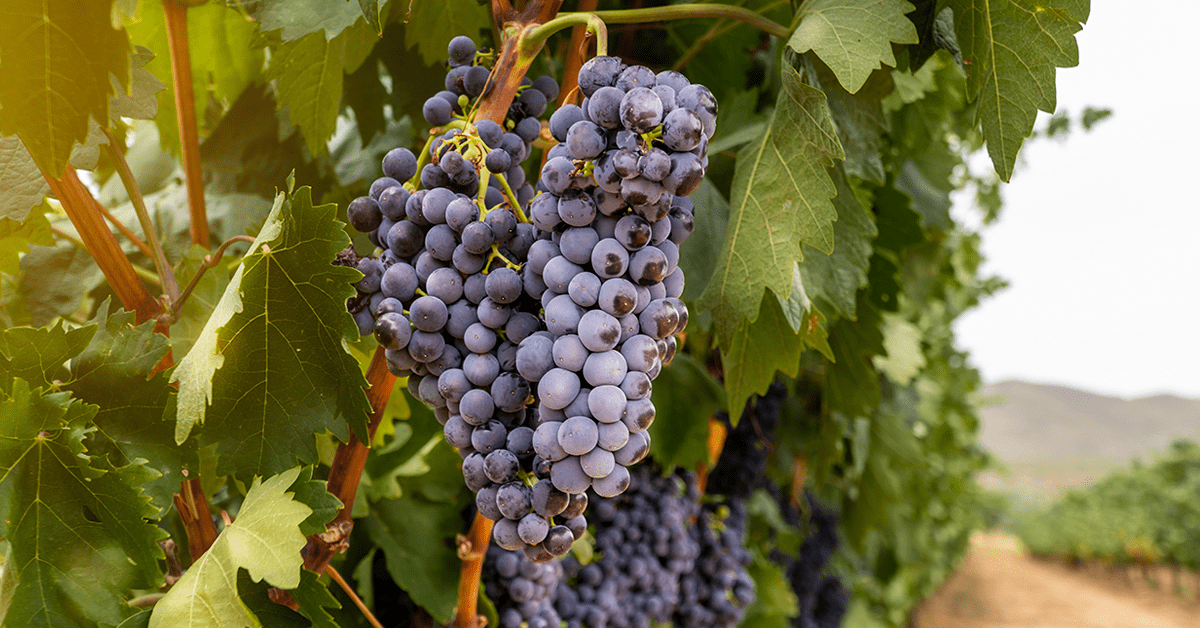
Exploring Different Styles
Malbec, as a grape varietal, is a chameleon that can adapt to various winemaking styles, resulting in a spectrum of wines that cater to diverse palates. Winemakers around the world approach Malbec with creativity and artistry, producing a range of styles that can appeal to both seasoned wine enthusiasts and those new to the world of red wines.
a) Fruit-Forward Expressions
Many Malbec wines emphasise the grape’s innate fruitiness, showcasing vibrant and juicy flavours of blackberries, plums, and cherries. These fruit-forward expressions are often crafted for immediate enjoyment, offering a burst of freshness and approachability. They are perfect for those who appreciate wines with a lively and exuberant character, making them ideal choices for casual gatherings and everyday enjoyment.
b) Structured and Complex Wines
On the other end of the spectrum, some winemakers choose to focus on crafting Malbecs with a more structured and complex profile. These wines may undergo extended maceration, fermentation, or oak ageing, resulting in a more layered and nuanced tasting experience.
Tannins play a more prominent role in these wines, providing a firm backbone that contributes to their ageing potential. These structured Malbecs are often sought after by collectors and enthusiasts looking for wines that can evolve and mature over time.
c) Blends and Terroir Exploration
Winemakers also experiment with blending Malbec with other grape varieties, creating unique cuvées that highlight the best qualities of each component. Additionally, some producers focus on expressing the influence of terroir, showcasing how different vineyard sites and soil types can impact the flavour profile of Malbec. These exploration-focused approaches provide wine enthusiasts with the opportunity to discover the nuances of Malbec in various contexts.
d) Sparkling and Rosé Malbec:
Beyond the traditional red expressions, Malbec has been used to produce sparkling wines and rosés. Sparkling Malbecs offer a lively and effervescent experience, while rosé Malbecs showcase a lighter and refreshing side of the grape. These alternative styles further contribute to the versatility of Malbec, demonstrating its adaptability to different winemaking techniques.
In essence, the beauty of Malbec lies in its ability to wear many hats. Whether you prefer a fruit-forward quaffer, a complex and age-worthy red, or something unconventional like a sparkling or rosé, Malbec has something to offer for every palate. Exploring the diverse styles of Malbec provides a delightful journey through the world of winemaking innovation and showcases the grape’s capacity to express itself in a multitude of captivating ways.

Budget-Friendly Options
One of the distinctive features that contribute to the widespread popularity of Malbec is its accessibility across a range of price points, offering wine enthusiasts a plethora of budget-friendly options without compromising on quality. Whether you’re an aficionado seeking an everyday wine or a newcomer to the world of reds, Malbec provides a gateway to a world of rich flavours without breaking the bank.
a) Affordable Argentine Gems
Argentina, being the primary producer of Malbec, has a robust market of affordable yet high-quality options. The country’s diverse terroirs and large-scale production allow for a wide selection of Malbec wines that deliver exceptional value for money.
These bottles often showcase the grape’s signature characteristics—plump fruitiness, velvety texture, and approachable tannins—at a price that makes them suitable for casual gatherings, weeknight dinners, or simply as an introduction to the world of red wines.
b) French Malbec Values
Exploring Malbec from its French origins in Cahors can also unveil hidden gems that provide excellent value. While French Malbecs from Cahors may exhibit a more tannic structure compared to their Argentine counterparts, they offer a unique expression of the grape at a fraction of the cost of some other French red wines.
c) Global Affordability
Malbec has also found a home in various other wine-producing regions, and these global alternatives often present budget-friendly choices. Countries such as Chile and the United States produce wallet-friendly Malbecs that capture the essence of the grape while catering to those seeking quality wines at an affordable price.
d) Versatility in Pairing
The approachability of Malbec extends beyond its price point; its versatility in food pairing makes it an excellent choice for those who enjoy diverse culinary experiences. Whether you’re pairing it with grilled meats, pasta dishes, or even pizza, the budget-friendly nature of Malbec makes it a go-to option for enhancing everyday meals.
In summary, Malbec’s affordability makes it an inviting option for both seasoned wine enthusiasts looking for a reliable everyday red and newcomers eager to explore the world of wine without a significant financial commitment. The accessibility of quality Malbec at various price points ensures that this grape remains an inclusive and welcoming choice for wine lovers of all backgrounds and preferences.

Embarking on a New Journey
In conclusion, the journey through the world of Malbec unveils a narrative that encompasses history, diverse terroirs, and a spectrum of flavours. Whether you’re drawn to the bold expressions of Argentinian Malbec, the structured elegance of French Cahors, or the innovative styles crafted by winemakers worldwide, Malbec stands as a versatile and captivating grape variety. Its ability to adapt to different winemaking approaches, food pairings, and budgets makes it a wine of choice for both connoisseurs and newcomers alike.
For those in Malaysia looking to embark on their Malbec exploration, the vibrant world of e-commerce offers a convenient avenue to discover and purchase a diverse selection of wines. Here are a few notable online wine stores in Malaysia:
a) Wine Connection Malaysia
Wine Connection is a renowned international wine retailer, and its Malaysian online store offers an extensive collection of wines from around the world. With a user-friendly interface, customers can explore a variety of Malbec options and access detailed descriptions to make informed choices.
b) Wine Talk Malaysia
Wine Talk is a leading online wine store in Malaysia, known for its curated selection of wines. The platform provides a dedicated section for Malbec wines, allowing enthusiasts to discover different styles and price points. Wine Talk often features promotions and exclusive deals, making it an attractive option for those seeking value.
c) Boozeat
Boozeat is an online platform that caters to various alcoholic beverages, including an impressive collection of wines. Their selection encompasses a variety of Malbecs, providing customers with options from different regions and winemakers. Boozeat often features promotions and discounts, making it an attractive choice for budget-conscious wine enthusiasts.
These e-commerce platforms not only offer convenience in purchasing Malbec wines but also provide valuable information and a platform for enthusiasts to delve into the world of wine with confidence. As you explore the rich flavours and stories behind Malbec, these online stores in Malaysia can be your gateway to a delightful and convenient wine-buying experience. Cheers to the exploration and enjoyment of Malbec!
Benefits of Having an Ecommerce Website
Having an ecommerce website offers numerous benefits for wine producers and sellers. It provides a global reach, allowing businesses to connect with a vast audience of potential customers. Online platforms offer convenience, enabling consumers to explore and purchase wines from the comfort of their homes. Ecommerce websites also facilitate direct communication with customers, allowing for personalised interactions and the building of brand loyalty.
Furthermore, an online presence allows for data collection and analysis, enabling businesses to understand customer preferences and tailor their offerings accordingly. Overall, an ecommerce website is a powerful tool for expanding market reach, increasing sales, and fostering a strong connection with wine enthusiasts.
Additionally, if you ever need an ecommerce website or online store to distribute your wines, whether in wholesale or B2C, consider reaching out to WDD Malaysia, a web design company that can build a bespoke website catering to wine enthusiasts.





